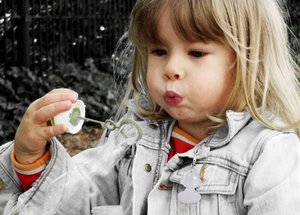Parents and caregivers often ask what young children need to know before kindergarten; this is the final post in this series on kindergarten readiness and early learning basics. No matter the age of your little one, this will give you a general picture of what to do as your child’s very first teacher.
Kindergarten readiness, as a whole package, includes supporting children as they learn about themselves and their bodies. Including lots of language, books, hands-on, and physical activities will cover a major chunk of children’s day. As kids play, they develop their understanding of and ability to regulate emotions, becoming more independent and confident. Familiarity with colors, letters, numbers, shapes, and other basics, also develops through play activities. As children have fun with crayons, glue ,and scissors, they coordinate and practice small muscle movements that theywill need later on.
Play is a fundamental learning strategy as children make decisions, solve problems and figure out cause and effect. Their early interactions give them lots of opportunities to communicate and learn with and about others. But there is another learning strategy that underlies everything else.
 As a parent slowly and eagerly opens a book with a child, capturing attention and just as eager anticipation, the parent is also teaching the child to unlock the magic by an action. On a walk, when lifting up a rock to discover tiny little creatures that are hiding underneath, again the magic needed the action. Yes, much learning takes place just by watching or listening to others, but that also requires an action, that of paying attention. The action can begin by simply wondering about something, which may then be followed by exploration, trial and error, and discovery moments. Actions can be mental or physical, but learning requires taking action.
As a parent slowly and eagerly opens a book with a child, capturing attention and just as eager anticipation, the parent is also teaching the child to unlock the magic by an action. On a walk, when lifting up a rock to discover tiny little creatures that are hiding underneath, again the magic needed the action. Yes, much learning takes place just by watching or listening to others, but that also requires an action, that of paying attention. The action can begin by simply wondering about something, which may then be followed by exploration, trial and error, and discovery moments. Actions can be mental or physical, but learning requires taking action.
There is no doubt that kids are active. In our role as parents and caregivers, we need to nurture children’s sense of wonder (mental action) and guide their exploration (physical action). That is how we create powerful learners.
P.S. Thank you for letting me be part of you and your child’s learning adventure. Are there some ways that I can support this for you?
